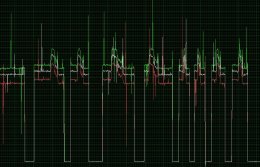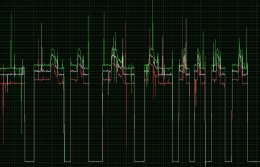Reepicheep
2008-08-04 08:40:08 UTC
Hello I've got the following problem: I'm collecting the data of several (3 so far) pressure-sensors with a NI-DAQ (USB6210). The sensor output is in voltage (mV). I had no problem with connecting the sensor and the DAQ, and I also have a clear reading in LabVIEW SignalExpress and in MAX (Measurement & Automation Explorer). So far, everything is ok.But periodically, I've got a potential drop to 0, alternating with a voltage increasing... I checked every part of the sensorplatform with a voltmeter (sensors, power supply, etc.) and everything works perfectly (no drop and no peak). The failure must happen somewhere at the DAQ... But I've got no clue why or how I could "repair" it...I attached an image of an data-aqquisition with LabVIEW SignalExpress, where you can see the problem... (the "short" peaks are due to the experimental set-up and could be removed easily) Thanks in advance for any help!Reepicheep
Sensor-image.JPG:
Loading Image...
Sensor-image1.JPG:
Loading Image...
Sensor-image.JPG:
Loading Image...
Sensor-image1.JPG:
Loading Image...